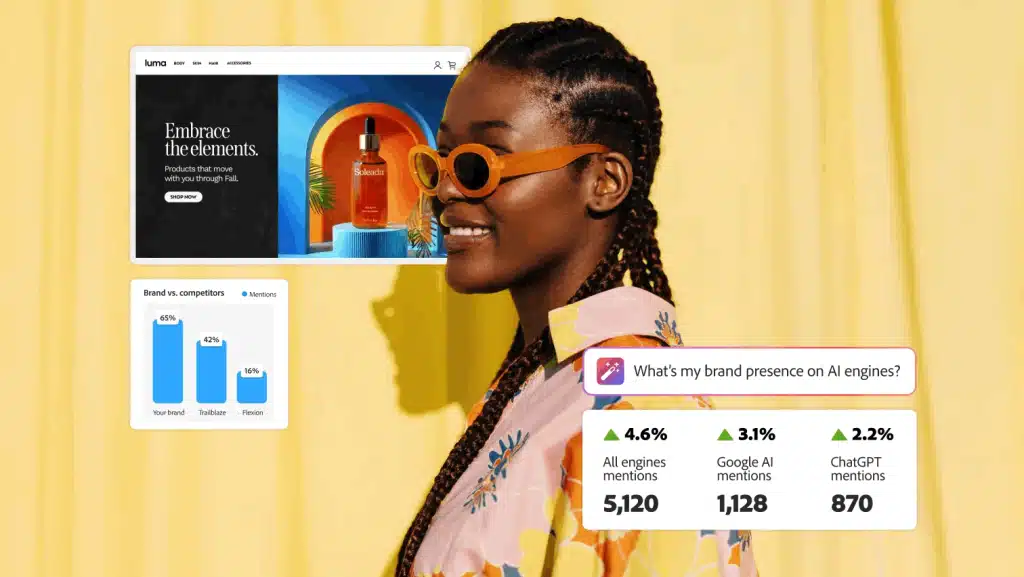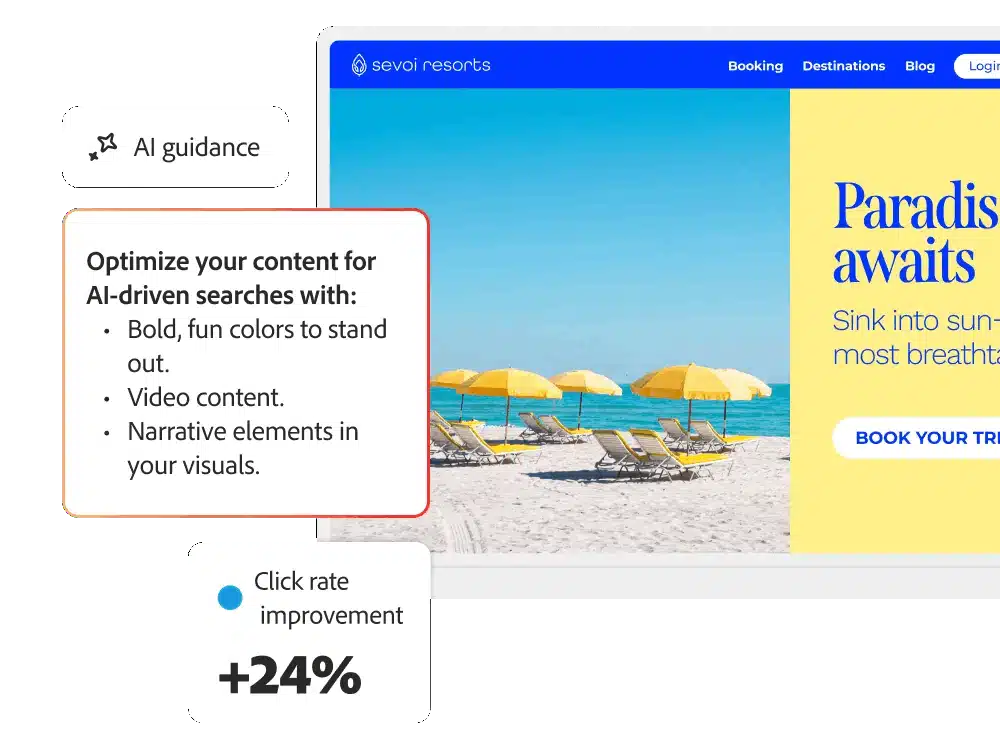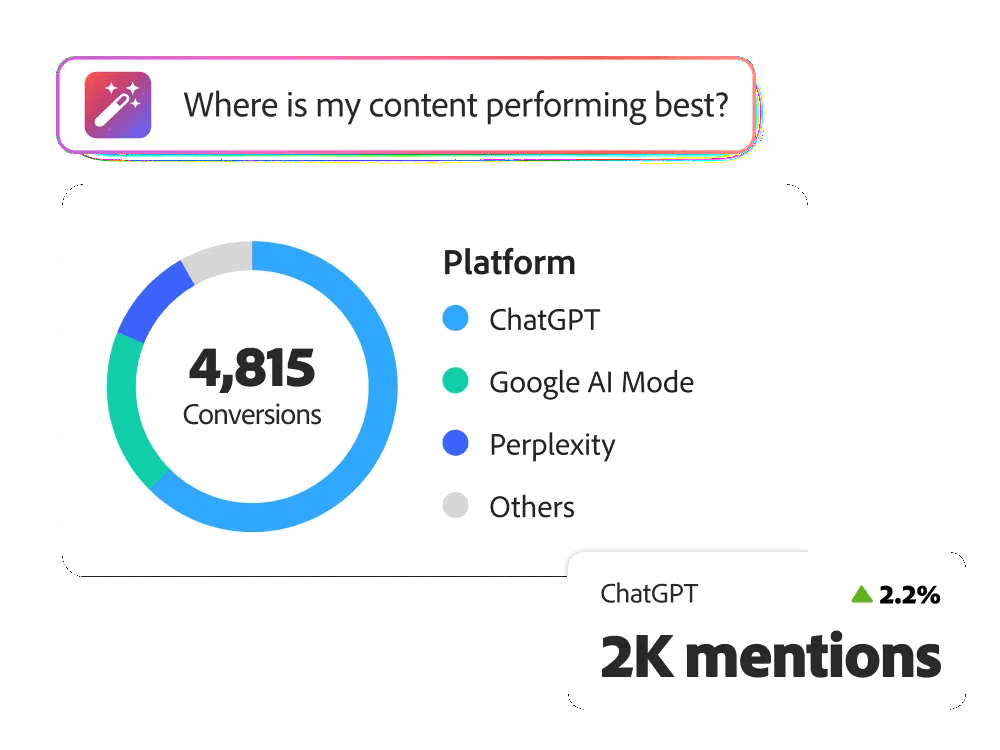Amazon EC2 R8g instances now available in additional regions
Starting today, Amazon Elastic Compute Cloud (Amazon EC2) R8g instances are available in Asia Pacific

Adobe’s LLM Optimizer debuted on June 16, 2025, at the Cannes Lions Festival, marking a strategic shift in digital marketing strategies¹. With consumers increasingly relying on generative AI platforms like ChatGPT, Claude, and Gemini for product research and recommendations, brands now face a pivotal moment in maintaining their visibility¹.

The LLM Optimizer uniquely identifies and analyzes “agentic traffic,” interactions initiated by AI agents and generative assistants². By monitoring content referenced by generative AI, brands gain actionable insights into their true visibility within AI ecosystems².
Adobe’s tool benchmarks a brand’s presence against competitors across high-value search queries³. By highlighting visibility gaps and opportunities, businesses can optimize their content effectively and efficiently³.
Integrated with Adobe Experience Manager (AEM), the optimizer suggests improvements in real-time. Recommendations include refining metadata, enhancing FAQs, and structuring content clearly, all achievable through immediate one-click updates within AEM².
The LLM Optimizer also monitors third-party sources like Wikipedia and forums cited by generative AI platforms, flagging inaccuracies and recommending updates to ensure brand consistency³.

Between July 2024 and May 2025, Adobe Analytics reported a staggering 3,500% increase in generative AI-driven traffic to retail sites, and 3,200% growth for travel platforms¹. Leveraging the LLM Optimizer positions brands prominently in AI-driven user queries, driving qualified traffic.
Traditionally, manual SEO optimization is labor-intensive. Adobe’s solution automates this process, freeing teams to focus on strategic initiatives rather than repetitive tasks⁴.
Real-time benchmarking allows brands to quickly adjust strategies, staying ahead of competitors within rapidly changing AI environments².
Ensuring consistency and accuracy across AI-generated references significantly enhances brand trust and authority among consumers⁵.
Retailers leverage LLM Optimizer to refine product descriptions and FAQs, ensuring AI-generated shopping recommendations accurately represent their offerings¹.
Travel brands use the optimizer to enhance destination pages and itineraries, maximizing visibility in AI-generated travel recommendations¹.
Financial institutions benefit from clearer content optimization, improving trustworthiness and consumer comprehension of complex products⁴.
A common misconception is that AI optimization diminishes content authenticity or creativity. However, Adobe’s LLM Optimizer complements human-generated content, enhancing clarity and precision without sacrificing originality or brand identity².

To effectively incorporate the LLM Optimizer, brands should:
1. Audit current AI-driven visibility using the optimizer’s monitoring tools.
2. Prioritize content gaps identified through competitive benchmarks.
3. Implement suggested improvements seamlessly through Adobe Experience Manager.
4. Continuously monitor impact and adjust strategies accordingly².
This structured approach ensures sustained visibility and competitive advantage in evolving generative AI landscapes.
The rapid adoption of generative AI in consumer decision-making means traditional SEO alone is insufficient. Adobe’s LLM Optimizer provides essential tools to ensure continuous relevance, discoverability, and credibility, positioning brands for long-term success².
Adobe’s LLM Optimizer equips brands with vital capabilities to excel in the era of generative AI. Through precise monitoring, benchmarking, actionable recommendations, and seamless integration with Adobe’s ecosystem, businesses can effectively manage their visibility, enhance consumer engagement, and secure a strong competitive position.
Citations
Please note, that the author may have used some AI technology to create the content on this website. But please remember, this is a general disclaimer: the author can’t take the blame for any mistakes or missing info. All the content is aimed to be helpful and informative, but it’s provided ‘as is’ with no promises of being complete, accurate, or current. For more details and the full scope of this disclaimer, check out the disclaimer page on the website.
The post Empowering Brands with Adobe’s LLM Optimizer to Drive AI-Powered Visibility appeared first on AI GPT Journal.
Author: Jim Malervy -
Starting today, Amazon Elastic Compute Cloud (Amazon EC2) R8g instances are available in Asia Pacific
Creators say app is intended for parental monitoring. So why the emphasis on stealth?
Amazon Connect now provides new editing and accessibility enhancements for the drag-and-drop flow designer making
Amazon Connect now provides APIs that allow you to delete cases, case comments, undo contact
Starting today, Amazon Elastic Compute Cloud (Amazon EC2) R7i instances are available in Asia Pacific